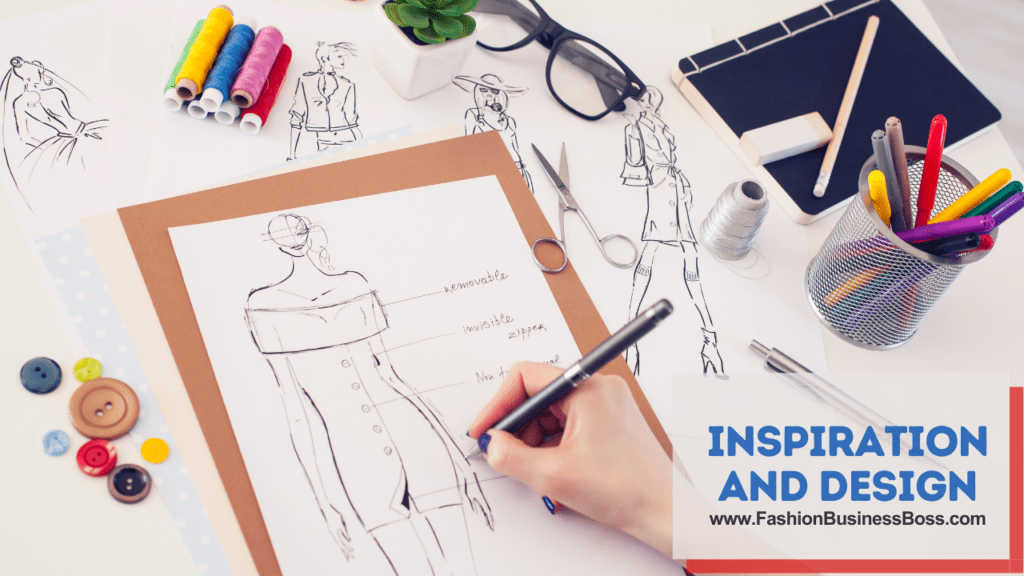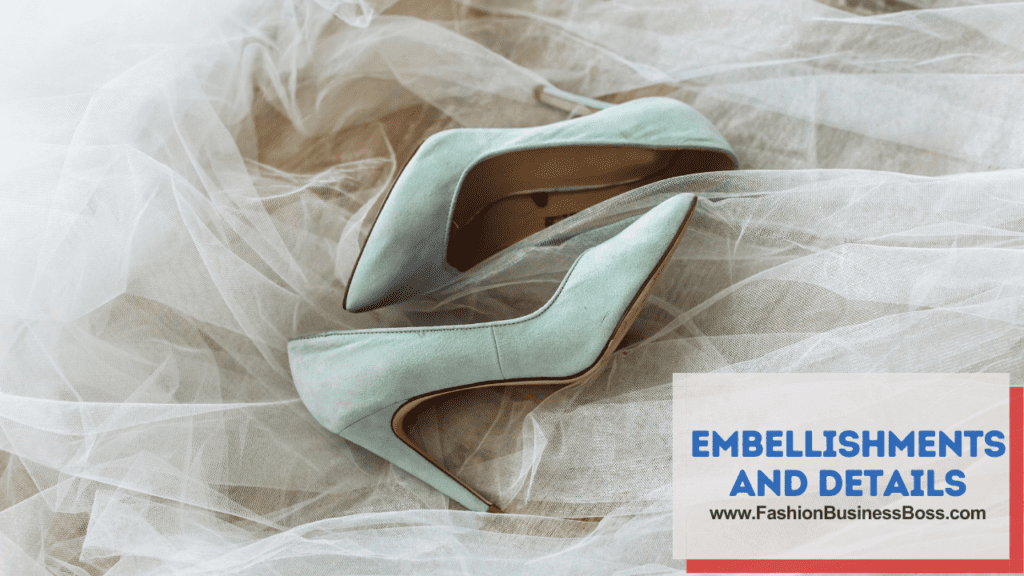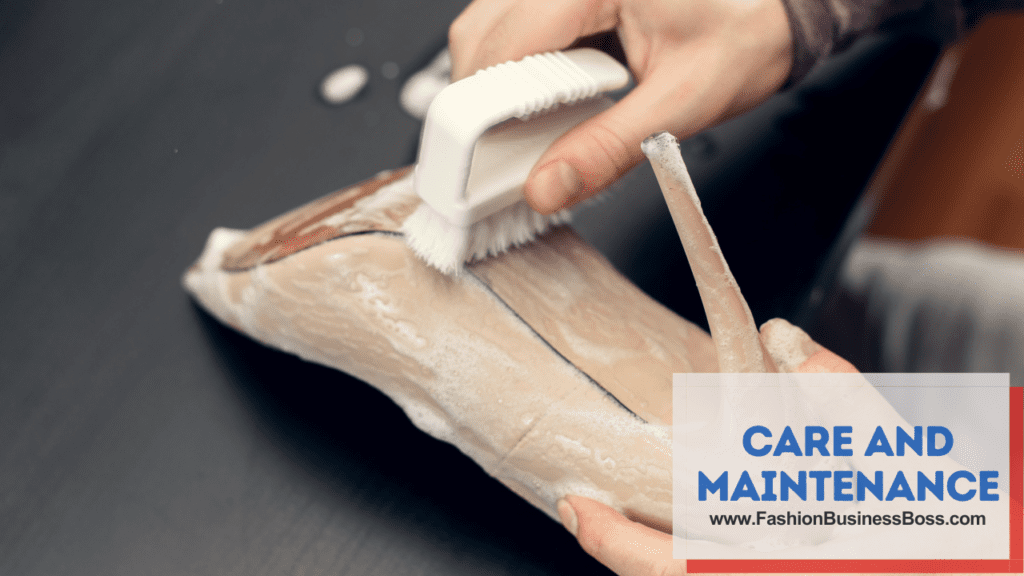Are you tired of the same old fashion trends and want to express your unique style? Making your own clothes is a fantastic way to stand out in a crowd while unleashing your creativity.
Here are some essential steps to make your own clothes: Begin by finding inspiration, selecting materials, and learning basic sewing skills. From patterns to finishing touches, crafting your unique style is a creative journey worth taking.
In this article, we will explore the exciting journey of creating your own garments from scratch.
Inspiration and Design

Embarking on the path of creating your own garments begins with the quest for inspiration. Seek inspiration from various sources, such as fashion magazines, online platforms, or even the world around you. Sometimes, a simple walk in the park can spark brilliant ideas. When you’ve found that muse, take a moment to sketch your design concepts. Consider critical elements like the choice of fabric, the interplay of colors, and the desired style of your creation.
It’s essential to factor in your skill level as you embark on this creative journey. If you’re new to garment-making, opt for a design that aligns with your current abilities. This approach ensures that you can confidently bring your vision to life without unnecessary complications, setting the stage for a fulfilling experience in the world of DIY fashion.
Read more about: Elevate Your Business: The Best Way to Start a Fashion Store Online
Gathering Materials
After crystallizing your design vision, the next step involves the procurement of essential materials. This encompasses the selection of appropriate fabric, thread, zippers, and any other necessary components for your project. It’s worth emphasizing that opting for high-quality materials is paramount, as they profoundly influence the final result of your creation. Hence, it is advisable to invest considerable thought and care in the process of material selection.
Begin by considering the specific requirements of your design. The fabric, for instance, should align with the intended style and purpose of your garment. Pay attention to factors like texture, color, and durability. Thread selection should complement the chosen fabric and ensure strong and secure seams. Similarly, the choice of zippers and additional notions must harmonize with your overall design concept.
By dedicating time and consideration to the selection of materials, you set a solid foundation for your DIY clothing project. This thoughtful approach significantly contributes to the quality and functionality of the final product, ensuring that your creative endeavor yields satisfying results.
Learning the Basics
Prior to embarking on your clothing project, it is essential to establish a foundational understanding of sewing. This foundational knowledge equips you with the necessary skills to confidently proceed with your endeavor. Here’s a straightforward approach to get started:
Firstly, acquaint yourself with the sewing machine you’ll be using. Familiarization includes understanding its different components, such as the presser foot, needle, and tension controls. Consult the machine’s manual for detailed instructions on its operation.
Next, it’s advisable to practice stitching on spare fabric. This allows you to become comfortable with the machine’s functionality and the principles of sewing. Begin with basic straight stitches and progress to more complex patterns as you gain confidence.
For those seeking structured guidance, numerous online tutorials and sewing classes are readily accessible. These resources provide step-by-step instructions and tips from experienced sewers. They cover essential techniques like threading the machine, adjusting stitch length, and troubleshooting common issues.
By dedicating time to learn the sewing basics, you equip yourself with the fundamental skills required for your DIY clothing project. This knowledge forms the cornerstone of your creative journey, ensuring that you can approach your sewing machine with confidence and precision.
Patterns and Measurements

Understanding patterns and taking precise measurements are pivotal steps in your garment-making journey. These aspects ensure that your final creation fits impeccably. Here’s a straightforward breakdown of these crucial elements:
Think of patterns as detailed blueprints for your garments. They provide the templates and instructions needed to cut and assemble the fabric correctly. You have two main options for patterns: purchasing commercial patterns or creating your own.
These are pre-made patterns available for purchase at fabric stores or online. They come in a variety of styles and sizes, making them convenient for beginners.
For a truly custom fit and unique design, you can draft your own patterns. This involves creating templates based on your measurements and design ideas. While it requires more effort, it offers creative freedom and tailored results.
Accurate measurements are the foundation of a well-fitting garment. Invest time in taking precise measurements, whether for yourself or the intended wearer. Utilize a flexible measuring tape to record key dimensions such as chest, waist, hips, and inseam length.
Read more about: Estimating The Expenses: Trademarking Your Clothing Brand
Cutting and Sewing
Cutting and sewing are the pivotal stages where your DIY clothing project truly takes shape. Once you’ve readied your pattern and selected the appropriate fabric, it’s time to carefully cut the fabric pieces following the outlines of your pattern. Precision during this phase is crucial to ensure that all components align with the pattern’s shape and size. Pay attention to details such as notches and markings on the pattern, as they are essential for proper assembly.
After the cutting is complete, it’s time to start sewing. Begin by pinning or basting the fabric pieces together according to your pattern’s instructions. This helps hold the pieces in place for stitching. Follow the step-by-step instructions closely, giving special consideration to seam allowances – the space between the edge of the fabric and the stitch line. These allowances are essential for achieving the right fit and look.
Troubleshooting
Mistakes happen, and they’re an expected part of the sewing journey. Instead of feeling disheartened, view them as opportunities for growth and learning. Troubleshooting, the process of identifying and resolving issues, is a valuable skill in itself. Here’s how to approach it:
When you encounter problems while sewing, remember that you’re not alone. Many sewists, both beginners and experienced, face challenges. A key resource is sewing guides, which provide solutions and tips for common issues. These guides offer clear, step-by-step instructions to help you navigate difficulties.
Consider turning to online forums and communities. These platforms are treasure troves of knowledge, where you can seek advice and share your experiences. Fellow sewists are often eager to assist and offer insights, making these forums invaluable for troubleshooting.
If the issue persists or seems particularly complex, it’s beneficial to seek advice from experienced sewists. They can provide personalized guidance based on their own experiences. Don’t hesitate to reach out to them for assistance; the sewing community is known for its supportive nature.
Embellishments and Details

Elevating your garments with personal touches can impart a distinctive charm to your creations. This step allows you to infuse your personality and creativity into your clothing. Here’s how to go about it:
Embellishments are decorative elements that enhance your garment’s appearance. One option is embroidery, a technique where you use colorful threads to create intricate patterns and designs on your fabric. Embroidery can add elegance and texture to your clothing.
Appliqué is another method to consider. It involves attaching pieces of fabric onto your garment to create eye-catching designs or shapes. Appliqué allows for endless possibilities in terms of customization.
For those with artistic inclinations, hand-painted designs offer a unique way to express yourself. Acrylic or fabric paints can be used to create personalized artwork on your fabric. This method gives you complete creative control over your garment’s aesthetic.
Read more about: Exploring Fruitful Avenues: Best Clothing Business Ideas
Fitting and Adjustments
As your garment gradually takes form, it’s important to pause for fittings to achieve an impeccable fit. Here’s a straightforward approach to this critical step:
When conducting fittings, you’re essentially trying on your partially completed garment to assess how it aligns with your body or the intended wearer’s body. These sessions provide valuable insights into the fit and comfort of your creation.
It’s essential to be prepared for the possibility of making adjustments. Not every garment will fit perfectly on the first try, and that’s perfectly normal. Patience is key during this phase. Be attentive to how the garment sits, noting any areas where it feels too tight, loose, or uncomfortable.
Identifying the areas that require adjustments is the first step. You might need to alter seams, darts, or other parts of the garment to achieve the desired fit. Remember that making these alterations may take some trial and error, so remain patient and persistent.
Finishing Touches
As your garment nears completion, it’s crucial to focus on the finishing touches. These details serve to enhance both the appearance and durability of your creation. Let’s explore these elements:
Hems are one of the final steps in sewing. They involve folding and stitching the edges of your fabric to create neat and tidy finishes. Hems not only contribute to a polished look but also prevent fraying, ensuring your garment lasts longer.
Next, consider buttons and closures. Buttons serve as functional and decorative elements, allowing your garment to fasten securely. Closures, such as zippers or snaps, make it easier to put on and take off your clothing. Ensure that these elements are securely attached to withstand daily wear.
Take care to sew these finishing touches meticulously, as they contribute to the overall quality of your garment. Neat hems, securely attached buttons, and durable closures are the hallmark of a well-crafted piece of clothing.
Care and Maintenance

Ensuring the longevity of your handmade clothes is crucial. Proper care and maintenance play a significant role in preserving your creations for the long term. Here’s a straightforward guide:
Understanding how to care for your garments begins with recognizing the specific needs of the fabrics you’ve used. Different fabrics may require different treatment. To this end, it’s essential to consult the care instructions provided for each fabric. These instructions will guide you on the appropriate washing, drying, and ironing methods to maintain the fabric’s quality.
When it comes to washing, gentleness is key. Use a mild detergent, preferably one designed for delicate fabrics, and opt for a gentle or hand wash cycle. Avoid excessive agitation or high temperatures, as they can cause wear and tear over time.
After washing, pay attention to drying. Many handmade garments benefit from air drying rather than tumble drying. Ensure your clothing is dried flat or hung properly to maintain its shape.
Lastly, don’t overlook proper storage. Store your garments in a cool, dry place away from direct sunlight. Avoid overcrowding to prevent wrinkles and maintain their condition.
Read more about: Express Yourself through Fashion: Making and Designing Your Own Clothes
Building Your Wardrobe
As you grow in confidence and experience with your sewing skills, you might want to think about expanding your collection of handmade clothing. Here’s how to go about it:
With your newfound skills and familiarity with sewing, you can confidently tackle more complex projects. These could involve garments with intricate designs, multiple components, or advanced sewing techniques. Taking on such challenges allows you to refine your abilities further.
Experimentation is key to building a diverse wardrobe. Try your hand at different styles, ranging from casual wear to formal attire. Experiment with various fabrics to understand how they drape and feel when worn. This exploration broadens your creative horizons and adds variety to your wardrobe.
Venturing into new techniques is an exciting step in your sewing journey. Consider incorporating features like pockets, pleats, or ruffles into your designs. These techniques not only enhance your garments but also provide opportunities for continuous learning and growth.
Showcasing Your Creations
Once you’ve crafted your unique clothing pieces, it’s time to share them with a wider audience. Here’s how you can go about showcasing your creations:
Social Media: Utilize platforms like Instagram, Facebook, or Pinterest to share photos of your handmade garments. Write a brief description to explain the design and your creative process. Using relevant hashtags can help your posts reach a broader audience interested in fashion and DIY projects.
Fashion Blogs: Consider starting a fashion blog where you can write about your creations in more detail. Share your sewing journey, provide insights into your design choices, and offer tips for fellow DIY enthusiasts. Blogging allows you to connect with like-minded individuals and showcase your work comprehensively.
Local Craft Fairs: Participating in craft fairs in your community can provide a tangible platform to display and sell your creations. These events offer opportunities to engage with potential customers and receive direct feedback.
Conclusion
Making your own clothes is not only a practical skill but also a form of self-expression. It allows you to break free from the constraints of mass-produced fashion and create pieces that truly represent your style. Remember, the journey may have its challenges, but the satisfaction of wearing something you’ve crafted with your own hands is immeasurable. So, unleash your creativity, and start sewing your unique fashion story today.
Frequently Asked Questions

Q: How can one get started with making their own clothes?
A: To begin crafting your own garments, start by finding inspiration for your designs, selecting suitable materials, and learning fundamental sewing skills. Consider taking sewing classes or using online tutorials for guidance.
Q: What are the key materials needed for making clothes at home?
A: To create homemade clothing, you’ll need essential materials such as fabric, thread, sewing machine, scissors, patterns, and various notions like zippers and buttons. Choosing high-quality materials is essential for a good outcome.
Q: What if I encounter problems while sewing my own clothes?
A: If you encounter challenges during the sewing process, don’t worry. Troubleshooting is part of the learning experience. Seek guidance from sewing guides, forums, or experienced sewists to help address any issues and improve your skills.
To learn more about starting your own clothing business, check out my startup documents here.
Please note that the contents of this blog are for informational and entertainment purposes only and should not be construed as legal advice. Any action taken based on the information provided in this blog is solely at your own risk. Additionally, all images used in this blog are generated under the CC0 license of Creative Commons, which means they are free to use for any purpose without attribution.

Meet Shawn Chun: Entrepreneur and Fashion Business Fan.
I’m a happy individual who happens to be an entrepreneur. I have owned several types of businesses in my life from a coffee shop to an import and export business to an online review business plus a few more and now I create online resources for those interested in starting new ventures. It’s demanding work but I love it. I do it for those passionate about their business and their goals. That’s why when I meet a designer or boutique owner at a craft fair, farmers market, retail location or anywhere else I see myself. I know how hard the struggle is to retain clients, find good employees and keep the business growing all while trying to stay competitive.
That’s why I created Fashion Business Boss: I want to help fashion business owners like you build a thriving business that brings you endless joy and supports your ideal lifestyle.

